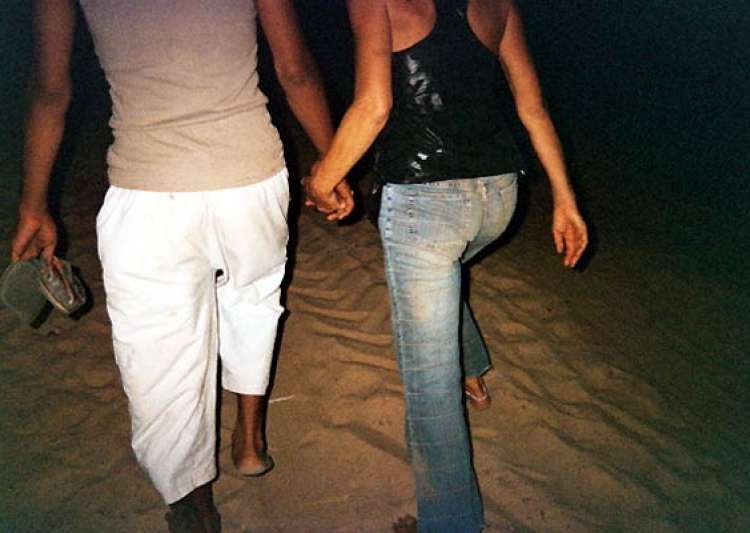RIO DE JANEIRO, BRAZIL – In Platform, a highly-erotic, hugely-controversial novel, the author Michel Houellebecq put forward a rather interesting theory.
As women continue to become more successful, entering fields and professions traditionally occupied by men, he argued, their actions and behaviors would become more masculine in nature.
Read also: Check out our coverage on curated alternative narratives
Take sex, for example. With the demise of the nuclear family and the subversion of social norms, women would be just as likely to pay for sex as men, suggested the master provocateur. Two decades on from the release of Platform, is there any truth to his words?
Yes.

When you hear the words sex tourism, what images spring to mind? Perhaps a middle-aged man with a potbelly boarding a plane to Thailand. In his late 40s, recently divorced, and struggling to overcome his mid-life crisis, this shameless character just wants to have some fun, even if it means exploiting innocent women. Think again.
Rollo Tomassi, a best-selling author who has spent well over a decade researching and writing about mating and dating trends, believes the way in which we view sex tourism is in need of a radical rethink. “When we think of sex tourism,” he told me, “we think of desperate Incels (involuntary celibates) traveling to Southeast Asian countries” to solicit the services of “underage prostitutes.”
But, he added, sex tourism is simply “the practice of traveling somewhere for the purpose of engaging in sexual activity.” Although men have dominated the world of sex tourism, the landscape is changing. Dramatically so.
“With the rise in divorce and women’s economic interests in recent years,” Tomassi said, “there’s been an increasing number of women from Europe, Canada, and the US traveling to countries to have sex with local men.”
“Kenya, Senegal, and the Gambia are the top countries for female sex tourism,” he added.
No disrespect, but these three countries are not exactly prime touristic destinations. According to Tomassi, a methodical researcher, female sex tourists tend to be “predominantly older white women from first-world countries.” There’s “a racial element to aging white women seeking sex in third-world countries like the Gambia.” How so? I asked.
Well, he replied, “over a third of its population survives on less than US$1.25 a day.” Many women, he noted, “are finding sexual gratification in countries where they would never be able to in their own country.” In other words, they go where the men are less likely to say no.
DOUBLE STANDARDS?
Another country that’s popular among female sex tourists is Jamaica, an island nation with a lush topography of mountains, tropical rainforests, sprawling beaches, and a thriving market dedicated to female sex tourism.
Dr. Hayley Stainton, an academic well versed in all things tourism, believes female sex tourism “is different from traditional sex tourism.” “While there are some women who travel to particular destinations (popular locations include the Gambia and the Caribbean) in search of paid sex,” she said, “most are seeking more than this.” Like what, exactly?
“In most instances, female sex tourists are middle-aged or older women who travel to African or Caribbean destinations seeking young, athletic black men for romantic encounters.” “Physical sex is usually, but not always involved.”
Quite often, she continued, “these women are in search of short-term or long-term romance. Some will embark on long-distance relationships upon their return to their home country.” For these women, it’s more akin to romance tourism rather than sex tourism.
Tomassi, however, was having none of this. When it comes to sex, he said, “men are far more pragmatic.” Basically, “they just go where the barrier to sexual entry is lower.” Women, on the other hand, “need to justify sex tourism as Romance Tourism” because “sexuality is always dirty for men but empowering for women,” hence the “post-feminist empowerment narratives and cute euphemisms to normalize what would be dirty for men but not themselves.”
This, he concluded, is why “prostitution” has been reframed as “sex work.” It is an attempt to “reconcile men’s evil sexuality with women’s empowering sexuality without changing the language.”
Although you might disagree with Tomassi’s conclusion, he makes a number of interesting points. Ask yourself, why are the most popular female sex tourism countries some of the poorest in the world? Why should we view male sex tourism and female sex tourism as entirely different entities? We shouldn’t.
Which brings us back to Jamaica, the fourth largest island country in the Caribbean. With almost 20 percent of the national population living below the poverty line, people are desperate. And desperate people are more likely to do desperate things, like sell their bodies for money. However, Dr. Stainton sees it a bit differently.
“Sadly,” she told me, “there are many examples of women who are taken advantage of in the female sex tourism industry. Men often request money from the women, which can sometimes be large amounts, and some men are motivated to embark on such relationships because they have ambitions to gain a passport to particular Western nations, most notably the US and the UK.”
Of course, one could argue that the men selling their bodies are also being exploited. Very few, if any, young boys have aspirations of becoming sex workers. But this is exactly what’s happening in poor countries around the world, including Jamaica.
Male sex workers, like their female counterparts, also struggle with anxiety, depression, and discrimination. Ask yourself, is female sex tourism, even romance tourism, any less exploitative than “traditional” sex tourism? In truth, probably not.

